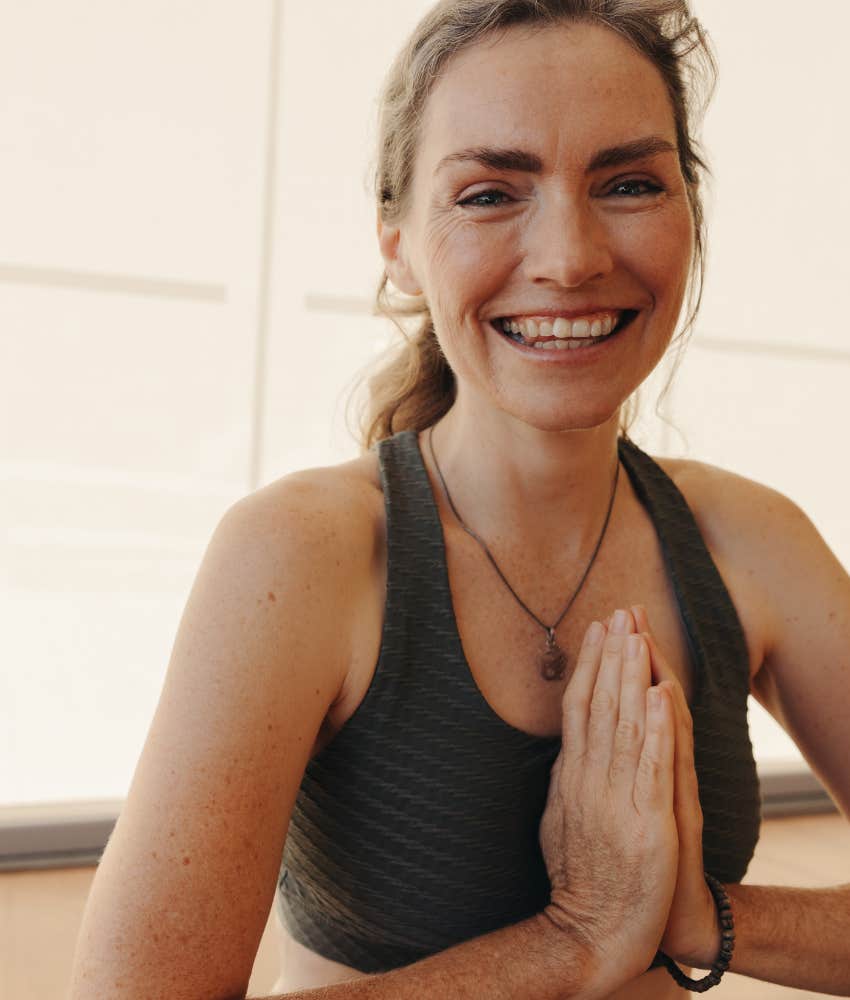4 Proven Techniques For Healing The 'Brain Wound' Humans Experience From Trauma
If you've ever felt stuck in old pain, these trauma-healing methods could finally move you forward.
 Inside Creative House | Shutterstock
Inside Creative House | Shutterstock Trauma doesn't just leave scars on the heart; it leaves what some experts call a "brain wound." When you go through something deeply painful, your nervous system, memory pathways, and even your brain chemistry can change in ways that make healing feel impossible. That's why traditional coping methods often aren't enough: the brain itself needs to recover for real, lasting healing to happen.
Niraj Naik, a pharmacist turned holistic health and breathwork expert, has dedicated his career to exploring how practices like breathwork, fasting, and yoga can help repair the brain after trauma. As a patient with stress-related depression and ulcerative colitis, Niraj was motivated to create a global community of heart-centered changemakers. Through Soma Breath, his global wellness movement, he's taught thousands of people how to use these methods to reduce stress, regulate their nervous systems, and restore a sense of inner balance. Some top names in wellness advocate for Niraj’s breathwork, and he joined Getting Open to talk about healing trauma through breath and more.
Here are 4 proven techniques for healing the 'brain wound' humans experience from trauma (and why they work):
1. Try intermittent hypoxic training
Trauma leaves wounds in the brain, but a breathwork practice called intermittent hypoxic training — which mimics high-altitude training — has been shown to help with healing. The technique uses rhythmic breathing followed by breath holds, an ancient pranayama method that simulates what mountaineers and elite athletes experience when they train at high elevations.
By cycling between normal and reduced oxygen levels, your body gets a powerful boost: it releases feel‑good chemicals like anandamide, dopamine, oxytocin, serotonin, and endorphins, while also waking up stem cells that support repair and healing those brain wounds.
Unlike climbing mountains, breathwork is completely in your control — you can turn it on and off whenever you want. And for many people, this kind of practice finally helps change the brain and nervous system in ways traditional coping methods haven't.
2. Use intermittent fasting to boost recovery
 platinumArt | Shutterstock
platinumArt | Shutterstock
Just like lowering oxygen can trigger healing, giving your body a break from food helps it repair itself on a cellular level. Intermittent fasting works especially well when combined with morning breathwork, because practicing on an empty stomach makes your red blood cells more efficient at delivering oxygen and replacing damaged cells.
Think of fasting as giving your mitochondria — the little powerhouses in your cells — a chance to reset. Reducing oxygen supply gives them a break, encouraging them to multiply and come back stronger, which promotes new cell growth to heal the wound and supports the kind of deep healing your brain needs after trauma.
3. Turn breathwork into a dance party
Healing doesn't always have to feel heavy — sometimes you can turn it into a fun exercise. Niraj teaches a "breathing rave," where you dance to your favorite music, let loose like nobody's watching, and then you slow your breathing down through your nose, hold your breath in, and exhale slowly.
Allow your body and breath to sync with the rhythm of the music so your breathing is in coordination with your movements. The result is a workout that energizes your body, calms your nervous system, and leaves you feeling like you just danced your stress away while having the best workout of your life.
4. Practice traditional yogic breathwork
 Jacob Lund | Shutterstock
Jacob Lund | Shutterstock
Yoga is one of the best exercises for healing trauma when practiced in its traditional form, combining breath with focused muscular contractions. In each pose, you exhale, hold the contraction as long as you can, and breathe deeply into the effort, training both your body and mind to stay steady under pressure.
When you hold your breath in the pose, try taking small sniffs of air and gradually go deeper into the pose while maintaining your effort, up to the point where you can't hold that contraction any longer. This technique helps reduce blood flow to the muscle, making your mitochondria more efficient, and can even help slow down your breathing rate.
This kind of focused practice helps slow your breathing, improve oxygen efficiency, and restore a deep sense of balance. It’s a way of retraining your body to feel safe, strong, and at peace again. When you have that mindset, it is a proper sign that healing can take place.
Slowing down your breathing makes you live longer.
On top of yoga and other breathwork practices, simply slowing down your breathing can make a big difference. Research shows that slower breathing reduces oxidative stress, which happens when oxygen burns to produce energy, so slowing this down can lead to longer lifespans. Think about how turtles, elephants, and whales breathe very slowly and live far longer than animals like mice. Training yourself to breathe calmly and steadily helps your body heal more efficiently and may even contribute to a longer life.
This is the science of living longer. In India, there are famous legends of long-living yogis — the oldest living people on the planet. They often reside at higher altitudes where oxygen levels are lower, which shows their deep understanding of our body's relationship with oxygen and toxins. That's why antioxidants are so important for us, and one of the best ways to boost antioxidants naturally is through nasal breathing and humming along with the rhythm of the world around us.
Healing the "brain wound" left behind by trauma isn't about quick fixes, but instead about giving your body and mind the tools they need to recover. Whether it's through breathwork, fasting, yoga, or simply slowing down your breathing, these techniques can help restore balance, calm your nervous system, and add more healthy years to your life.
Will Curtis is YourTango's expert editor. Will has over 14 years of experience as an editor covering relationships, spirituality, and human interest topics.

